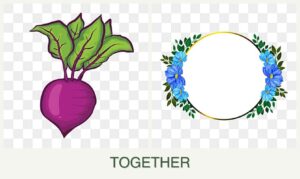
Can you plant carrots, onions and basil together?
Can You Plant Carrots, Onions, and Basil Together?
Gardening enthusiasts often explore companion planting to enhance plant growth and deter pests. Carrots, onions, and basil are popular choices, but can they thrive together? This article will explore their compatibility, benefits, challenges, and best practices for planting these companions.
Compatibility Analysis
Yes, you can plant carrots, onions, and basil together. These plants make good companions due to their complementary growth habits and pest-repellent properties. Carrots and onions help deter each other’s pests, while basil adds an aromatic layer of protection. They share similar sunlight and soil requirements, making them compatible for a shared garden space.
Growth Requirements Comparison Table
| Plant | Sunlight Needs | Water Requirements | Soil pH & Type | Hardiness Zones | Spacing Requirements | Growth Habit |
|---|---|---|---|---|---|---|
| Carrots | Full sun | Moderate | 6.0-7.0, loose | 3-10 | 2-4 inches apart | Root vegetable |
| Onions | Full sun | Moderate | 6.0-7.0, well-drained | 3-9 | 4-6 inches apart | Bulb-forming |
| Basil | Full sun | Moderate | 6.0-7.5, well-drained | 4-10 | 12 inches apart | Herbaceous, bushy |
Benefits of Planting Together
Planting carrots, onions, and basil together offers multiple benefits:
- Pest Repellent Properties: Onions emit a scent that deters carrot flies, while basil repels aphids and other harmful insects.
- Improved Flavor: Basil is believed to enhance the flavor of nearby vegetables.
- Space Efficiency: Their differing growth habits allow for efficient use of garden space.
- Soil Health Benefits: Carrots help aerate the soil, promoting better root growth for onions and basil.
- Pollinator Attraction: Basil flowers attract bees, aiding pollination in the garden.
Potential Challenges
- Competition for Resources: Ensure adequate spacing to prevent competition for nutrients and sunlight.
- Different Watering/Feeding Needs: Monitor soil moisture to meet the needs of all three plants.
- Disease Susceptibility: Watch for fungal diseases, especially in humid conditions.
- Harvesting Considerations: Stagger planting times to avoid simultaneous harvesting, which can disturb roots.
- Practical Solutions: Use mulch to retain moisture and improve soil health, and employ crop rotation to reduce disease risk.
Planting Tips & Best Practices
- Optimal Spacing: Plant carrots 2-4 inches apart, onions 4-6 inches apart, and basil 12 inches apart.
- When to Plant: Start onions early in spring, followed by carrots and basil after the last frost.
- Container vs. Garden Bed: While garden beds offer more space, containers can be used with careful spacing.
- Soil Preparation Tips: Ensure soil is loose and well-drained; amend with compost for added nutrients.
- Companion Plants: Consider adding marigolds for additional pest control and lettuce for shade-loving ground cover.
FAQ Section
Can you plant carrots and onions in the same pot?
Yes, but ensure the pot is large enough to provide adequate space and depth for root development.
How far apart should carrots, onions, and basil be planted?
Carrots should be 2-4 inches apart, onions 4-6 inches, and basil 12 inches apart to prevent overcrowding.
Do carrots and onions need the same amount of water?
They have similar water needs; aim for consistent moisture without waterlogging the soil.
What should not be planted with carrots, onions, and basil?
Avoid planting dill near carrots and beans near onions, as they can stunt growth.
Will basil affect the taste of carrots and onions?
Basil can enhance the flavor of nearby vegetables, making them more aromatic and savory.
When is the best time to plant carrots, onions, and basil together?
Plant onions in early spring, followed by carrots and basil after the risk of frost has passed.
By understanding the compatibility, benefits, and challenges of planting carrots, onions, and basil together, you can create a thriving vegetable and herb garden. With careful planning and maintenance, these companions can enrich each other’s growth and enhance your gardening experience.



Leave a Reply